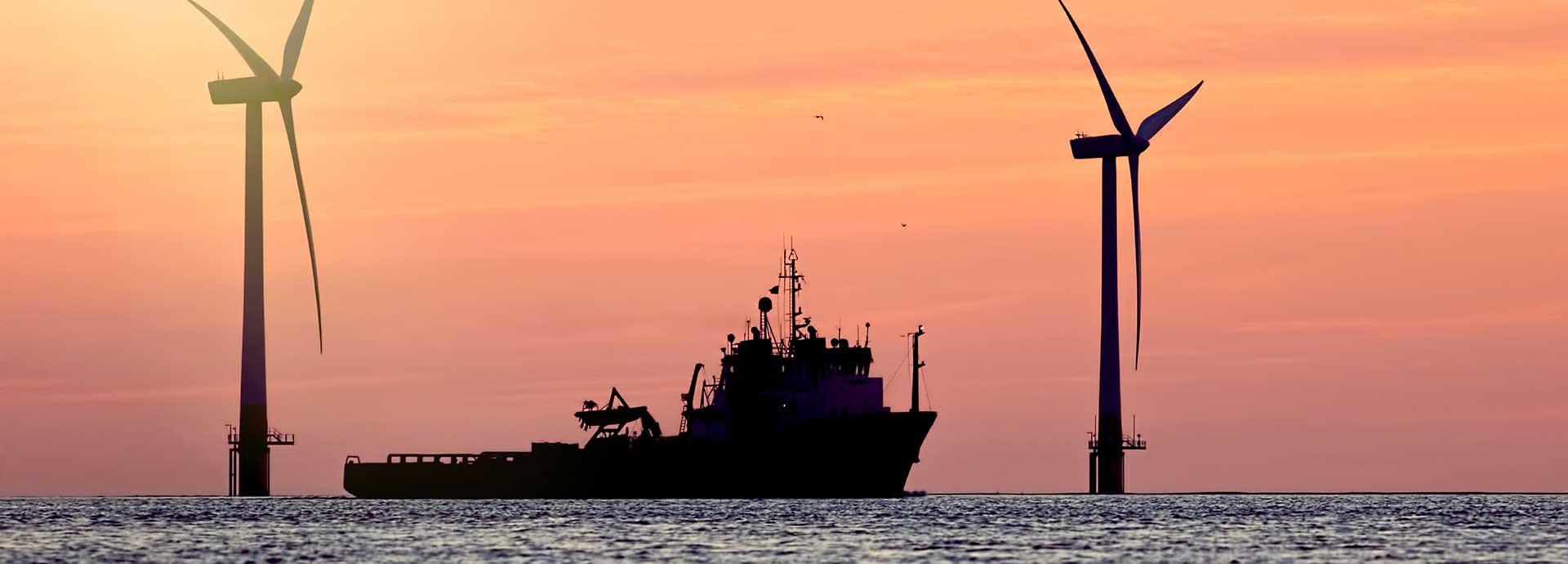

The increase in offshore wind power around the world brings opportunities for large service operation and installation vessels. Wärtsilä’s integrated solutions offer customers new ways to take advantage of this growth.
Offshore wind energy is one of the renewable energy sectors best-positioned to benefit from heightened interest in emissions-free electricity generation. According to analysis by Market Research Engine, the offshore wind energy market will exceed 81,000MW by 2024, growing at a CAGR of over 25% over from 2020-2024. In turn, the large service operation vessel (SOV) and large installation vessels markets are uniquely positioned to take advantage of this massive growth in offshore wind.
Opportunities in both retrofits and new builds
The opportunities for SOV and large installation vessels fall into two categories: retrofitting and new builds. Much of the opportunity for conversions/retrofit projects is in the US market, as strong growth continues there.
“In the US offshore wind farm market, the operators are preparing for the possibility of building type-specific SOVs that can accommodate the usually land-based wind turbine technicians while conducting the maintenance of the offshore wind farms,” says Blake Jackson, a US-based sales manager for Wärtsilä Marine Business.
“These vessels have an elevated requirement for crew comfort, station keeping, and roll reduction,” Jackson says, highlighting some of the vessels’ features. He adds that they are “highly integrated with self-compensating gangways interfaced into the Dynamic Positioning and alarm and monitoring systems for safe walk to work ability.”
The Wärtsilä SOV design, paired with the Wärtsilä integrated equipment package, is ideally suited to this level of specification and integration, which makes Wärtsilä solutions particularly appealing for this market.
In terms of new builds, there is a lot of potential in the North Sea. Arthur Boogaard, general manager, Business Sales, Wärtsilä Marine Business, explains that this is due to the increase in the size of offshore wind turbines. While 10-15 years ago, wind turbines had a maximum size of 3-5MW, the largest wind turbines today can be as big as 12MW.
“The older generation vessels can no longer be used because their cranes are inefficient. That’s one reason why the vessels need to become bigger and more powerful,” Boogaard says.
Wind turbine size alone isn’t the only factor pushing operators towards larger vessels.
“Offshore wind projects are also moving into deeper waters,” notes Boogaard. “A lot of the first wind turbines were built in shallow water, but now that space is filled. Contractors are having to look elsewhere, further offshore in deeper,
more hazardous conditions. This means that new wind farms will have longer foundations that require bigger ships with larger crane capacity and the ability to manoeuvre in deep waters.”
Planning for the long term
Regardless of whether owners plan to retrofit existing vessels or purchase entirely new ones, vessel owners and operators will have to strategically plan their investments for the long term. Although the penalties put in place by the Paris Agreement have yet to kick in, vessel owners are already taking these standards as well as IMO emissions reduction requirements into consideration when making purchasing decisions.
“If you build a vessel now, it will still be operational by 2050,” says Boogaard. “So, it needs to both meet the IMO regulations and be designed in a flexible way, using existing technologies, while at the same time being flexible in the design to accommodate new technologies that will become available in the next 5-10 years.”
Biofuels, hydrogen fuels, hybrid batteries, heat recovery systems, and cold recovery systems are only a few of the technologies that environmentally conscious purchasers are including in their vessels’ designs. While these biofuels and hydrogen fuels won’t become available until five to 10 years from now, Boogaard notes: “We’re already preparing customers for these fuels, and customers are responding by planning their vessels [for this] future accordingly.”
Cato Esperø, Norway Sales Director, Wärtsilä Marine Business, calls Wärtsilä an ideal partner for vessel owners and operators in the offshore wind industry. Esperø says that Wärtsilä’s knowledge, expertise,
and experience in this industry provides a unique ability to collaborate with customers and find the solution that meets their exact specifications and needs. As a trusted partner, Wärtsilä will work with owners and operators at all stages
of a vessel’s design, build, and maintenance, delivering complete solution integration and lifecycle optimisation for greater performance, efficiency and safety.
A global opportunity
Offshore wind farms – and opportunities for Wärtsilä to sell vessels supporting – them can be found around the globe, according to Esperø.
“If you look at the energy maps and plans, there are many areas all over the world now being defined for wind activity in the oceans,” he says.
Boogaard agrees with Esperø’s assessment.
“Governments will release more sites to build wind farms. In Europe’s North Sea area, this started 10-15 years ago, so it’s already well-developed, and there are thousands of wind turbines in the North Sea. [Regardless,] there’s still room to grow this market in Europe, and especially the North Sea,” says Boogaard.
Boogaard also thinks there are opportunities outside Europe. “We see a lot of activity in China [and] we’re working on projects in Taiwan and Japan.”
Jackson, the US specialist, sees plenty of opportunities there as well. “US states up and down the East Coast have made commitments to purchase energy generated via wind power,” Jackson says. “Currently, there are 18,642MW in purchase agreements. This is a USD 70 billion opportunity for oil and gas supply chains in the US. In the area of offshore wind energy, we’ve been calling the US East Coast the ‘Saudi Arabia of wind’ because power generation matches perfectly with peak consumption hours, which reduces the need for storage.”
As offshore wind projects continue to be deployed around the world, it’s easy to see SOV and large support vessel operators benefiting. The more wind farms there are around the world, the more need there will be for SOVs and large support vessels.



